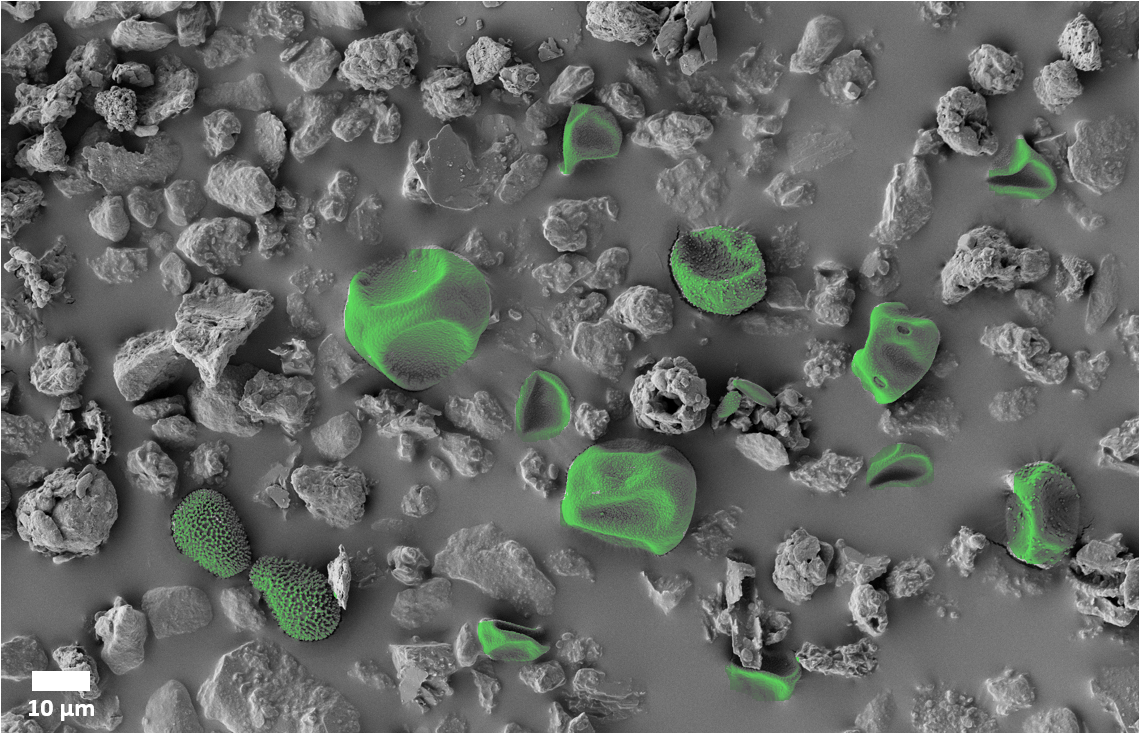Sonnblick Observatory: new measuring device identifies aerosols with artificial intelligence
A special measuring device for bioaerosols has been installed at the Sonnblick Observatory of GeoSphere Austria. It uses various physical methods and artificial intelligence to measure bioaerosols present in the air, such as pollen and fungal spores, as well as mineral dust particles, cloud droplets and ice crystals. The data is used for climate research, for example to investigate open questions about the formation of clouds and precipitation.
GeoSphere Austria's Sonnblick Observatory is located in the Hohe Tauern at around 3100 metres above sea level and is one of the most important measuring and research stations of its kind in the world.
GeoSphere Austria has been operating a device for automatically measuring and analysing bioaerosols, a SwisensPoleno Jupiter, at the Sonnblick Observatory for several months now.
This is the first time that Austria has a permanent measuring point in the high mountains for the automatic monitoring of bioaerosols. Bioaerosols are tiny particles in the air that have a natural origin. These include, for example, pollen, fungal spores, bacteria and fragments of biological material. Depending on the type, their size is in the range of a few hundredths, thousandths or ten thousandths of a millimetre. The type and concentration of bioaerosols in the air have a wide range of effects on weather, climate, vegetation and humans. The topics range from pollen allergies to the formation of clouds, rain and snowfall.
‘Conventional pollen measuring devices, also known as pollen traps, have to be analysed manually under a microscope on a regular basis, which means that the data is only available with a significant time delay. The new measuring system at Sonnblick, on the other hand, automatically distinguishes between the different types of aerosol. In addition, the measurements and their progression over time should also be available online in near-real time in the future,’ explains project manager and physicist Julia Burkart from GeoSphere Austria, ’for example, the new measuring device generates holographic images of the aerosols and digital images from them. In addition, a kind of digital fingerprint of the aerosols is analysed using light scattering and fluorescence. The software used to analyse the data works with artificial intelligence methods and can therefore be trained to distinguish the aerosol types better and better.’
The benefits of the measurements are manifold. Aerosols, for example, play an important role in the formation of clouds and precipitation. Aerosols are almost always involved in the formation of droplets or ice crystals. However, not all processes and interactions have yet been researched. Long-term changes in the type and number of aerosols in the air therefore have an impact on cloud cover, rain and snowfall and are an important factor in climate models that calculate scenarios for the coming decades.
‘Climate change is causing many changes, especially in high alpine regions. The glaciers are retreating, snow cover is decreasing, the composition of the vegetation is changing and some plant species are moving to higher altitudes,’ says Julia Burkart, ’The aim is to investigate how this affects the concentration and type of pollen, fungal spores and other bioaerosols and what effects we can expect as a result. The remote location of the Sonnblick Observatory is particularly suitable for investigating the transport processes of bioaerosols.’
In the current start-up phase, measuring equipment and analysis programmes are being adapted to the special conditions at Sonnblick. The aim is to identify the different bioaerosols present here as accurately as possible.
The research work is being carried out as part of the Vienna Network for Atmospheric Research (VINAR).
The measuring device is part of the AeroCloud-AT project, which aims to research the interactions between aerosols and clouds. The project is a collaboration between the Vienna University of Technology, the University of Vienna and GeoSphere Austria, funded by the Austrian Research Promotion Agency (FFG).
Translated with DeepL.com (free version)



